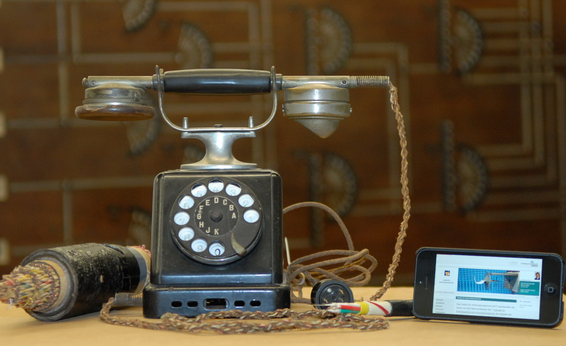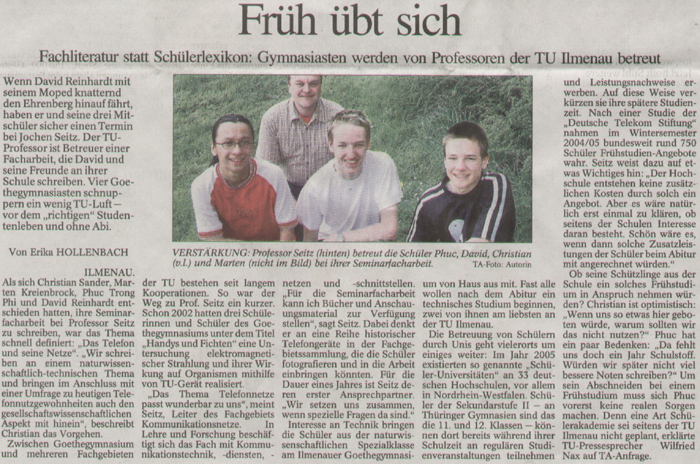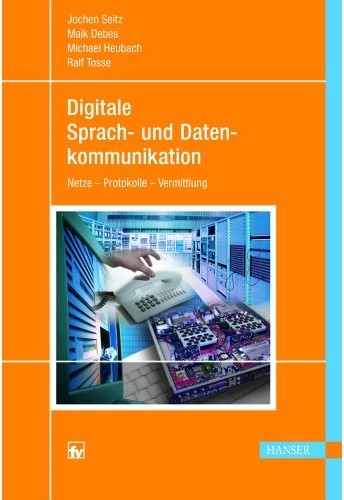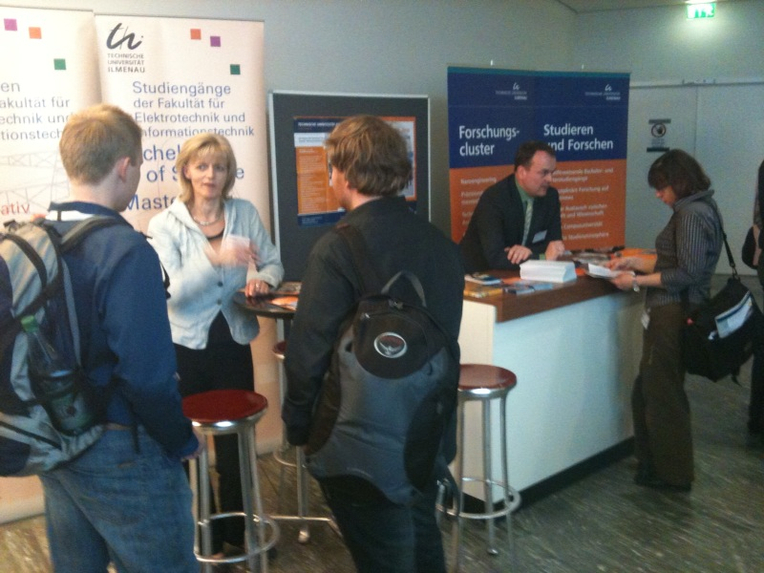From analog telephony to mobile communication
(60th Anniversary at the Institute of Information Technology of the Faculty of Electrical Engineering and Information Technology)
60 years ago, on March 1, 1956, Dr.-Ing. Günther Ulrich was appointed professor at the Ilmenau University of Applied Sciences for Electrical Engineering and entrusted with the establishment of the Institute for Telecommunications Engineering. At the same time, he took over the office of the dean of the Faculty of Weak Current Technology, which at that time still included the Institutes of High Frequency Technology, of Electroacoustics, of Control Engineering as well as Electromedical Apparatus and X-Ray Technology. The Institute for Telecommunications Engineering became the nucleus for the current fields of communications engineering and communications networks.
From the beginning, Prof. Ulrich established two fields of work, wireline communications and switching technology. It was the decade after important technical discoveries and developments, and thus the transistor and the pulse code modulation already played a role in document and diploma theses of the first matriculation, i.e. basic elements of today's dominant digital technology based on semiconductors. The fact that the analog carrier-frequency communication on copper cables at that time required a distinct theoretical design work for filter circuits was in turn the starting point for the continued emphasis on theoretical subjects up to a later focus on the simulation and design of digital fiber-optic transmission systems, which finally found its continuation in mobile communication. Despite the consistently poor availability of components and equipment during the first 40 years, there were also intensive efforts during this period not to neglect the experimental component. One example is the in-house construction of an error rate measurement station.
A fundamental change with regard to the technical equipment occurred, as everywhere, after the political new beginning in the nineties. It turned out that the technical books and scientific publications of the (in the meantime renamed) scientific department of communications engineering were nationally and internationally noted. Here it must be noted that not least the good working atmosphere and the cohesion between colleagues even beyond working hours contributed to the successful work.
As far as international relations were concerned, they had previously been limited to the then Eastern Bloc countries, especially the Czech Republic and Hungary. Now there was an increasing professional exchange, especially with West German universities, but also with Switzerland, Austria, the Netherlands, England and the USA. This took place in the form of visiting professorships (Prof. Kreß, TU Munich and TU Vienna), study visits (USA) and participation in internationally staffed working groups.
The current equipment with up-to-date computer technology allowed a serious intensification of the work on the optimization of fiber optic systems, flanked by a modern optical laboratory, which was presented to the then Federal President Richard von Weizsäcker to demonstrate the positive development on the occasion of his visit to the TU in 1993. The investigations on the principle of optical heterodyne reception, which had already been envisaged before, pointed far into the future of high bit rate transmission, not forgetting the phase of optical polarization multiplexing. In the transition to topics of mobile radio and intelligent antennas, the work on infrared indoor communication, which is exotic compared to the radio frequency range, also received international recognition.
The lectureship and later professorship "Digital Signal Processing" (Prof. Zühlke), which had been established in the meantime, had, in addition to a large number of patents, gratifying results in the field of speech coding. Among other things, a Johann-Philip-Reis prize was awarded there.
At the beginning, the main focus of the work in switching technology was on investigations into the wiring test of electromechanical switching equipment, which led to direct industrial use, and then predominantly on the implementation of signalling protocols on the subscriber line and the interconnection line of communication networks. After initially focusing on analog signaling methods, and in particular the use of microcomputers to modernize equipment, contributions were later made to the use of the CCITT signaling system No.7. The international recognition of the work was demonstrated by its inclusion in an EU project investigating the further development of signalling for future communications networks. With great effort, the part-time continuing education course "Telecommunications Manager" was realized, in which managers from the industry are qualified for their work.
From the beginning, all work was based on contract research with research institutes of the communications industry (INT) and the German Post Office (IPF). Thus, the acquisition of third-party funding is an old tradition that has been continuously continued, and so it has remained until today, as third-party research with the DFG, the BMBF, the BMWI and the state of Thuringia dominates.
In the meantime, about 100 doctoral students have been awarded their doctorates (including 8 habilitation students).
All work was characterized by a close connection between theory and practice. Theoretical results were presented in numerous publications and lectures and found their way into a practice-oriented education of the students. Former employees were or are professors at universities and universities of applied sciences or were active in leading positions in the ministry.
With the restructuring of the faculties in 1993, the 3 departments of Communications Engineering (D. Kreß, from 2001 M. Haardt), Communication Networks (from 2001 J. Seitz) and (temporarily) Digital Signal Processing (W. Zühlke) were created, of which the first two are now part of the Institute of Information Technology. The main focus of their work is mobile communication.
The Communication Networks group is concerned with communication protocols and services in various fields of application. In contrast to earlier research activities of the Switching Technology group, the focus is now on the Internet. Current buzzwords such as "Internet of Things", "Car-2-X" or "Rescue Communications" form the framework of the current research topics.




